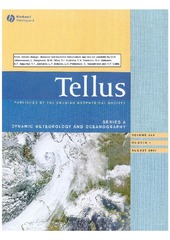Arctic climate change: observed and modelled temperature and sea-ice variability
Johannessen, Ola M.; Bengtsson, Lennart; Miles, Martin W.; Kuzmina, Svetlana I.; Semenov, Vladimir A.; Alekseev, Genrikh V.; Nagurnyi, Andrei P.; Zakharov, Victor F.; Bobylev, Leonid P.; Pettersson, Lasse H.; Hasselmann, Klaus; Cattle, Howard P.
Peer reviewed, Journal article
Permanent lenke
https://hdl.handle.net/1956/2728Utgivelsesdato
2004-07-09Metadata
Vis full innførselSamlinger
- Geophysical Institute [1198]
Originalversjon
https://doi.org/10.1111/j.1600-0870.2004.00060.xSammendrag
Changes apparent in the arctic climate system in recent years require evaluation in a century-scale perspective in order to assess the Arctic's response to increasing anthropogenic greenhouse-gas forcing. Here, a new set of century- and multidecadal-scale observational data of surface air temperature (SAT) and sea ice is used in combination with ECHAM4 and HadCM3 coupled atmosphere-ice-ocean global model simulations in order to better determine and understand arctic climate variability. We show that two pronounced twentieth-century warming events, both amplified in the Arctic, were linked to sea-ice variability. SAT observations and model simulations indicate that the nature of the arctic warming in the last two decades is distinct from the early twentieth-century warm period. It is suggested strongly that the earlier warming was natural internal climate-system variability, whereas the recent SAT changes are a response to anthropogenic forcing. The area of arctic sea ice is furthermore observed to have decreased ~8 x 105 km2 (7.4%) in the past quarter century, with record-low summer ice coverage in September 2002. A set of model predictions is used to quantify changes in the ice cover through the twenty-first century, with greater reductions expected in summer than winter. In summer, a predominantly sea-ice-free Arctic is predicted for the end of this century.
